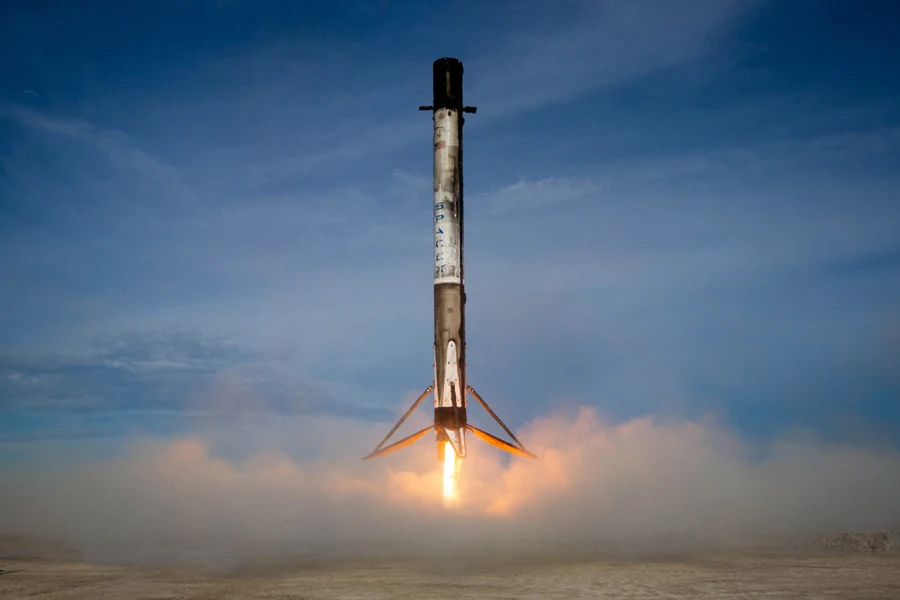A Guide to Acronyms Used at Kennedy Space Center
Published: February 19 2024 Updated: March 26 2025

While taking in a rocket launch at Kennedy Space Center Visitor Complex, arguably one of the coolest parts is hearing real-time communications from Launch Control as they talk through the process – leading to the much-anticipated “We have liftoff!”
But sometimes, there might be a few acronyms that sneak through that may leave you questioning what they mean.
We’re here to help you figure them out.
Acronyms are everywhere within NASA (itself even an acronym), space flight, and Kennedy Space Center. Because time is of the essence during rocket launches, sometimes it’s easier to say or spell an acronym than it is the full phrase it’s abbreviating. But with our help, you can learn the same abbreviations that Launch Control and astronauts use.
So impress your BFFs with this list of acronyms!
AOS – Acquisition of Signal
When you hear or see this acronym, it means good news! Acquisition of Signal is a phrase used during launch when communication is reestablished after LOS (see below to find out what that acronym means).
CCSFS – Cape Canaveral Space Force Station
Home to the United States Space Force Space Command’s 45th Space Wing, and home to many of the rocket launches you can see from the region. It is also the launch site of the first U.S. Earth satellite, the first U.S. astronaut and the first U.S. astronaut to Earth’s orbit, among other significant accomplishes.

LAS or LES – Launch Abort or Launch Escape System
This is the system that evacuates a capsule from a malfunctioning rocket, potentially saving astronauts’ lives!
LC-39A/B – Launch Complex 39A/B
Launch Complex 39A is the former site of Saturn V and the space shuttle. It is now being leased to SpaceX. On November 16, 2022, Artemis I launched from Launch Complex 39B.

LOS – Loss of Signal
This means that, during launch, communication with the vehicle is lost with the ground station. It’s usually a result of the spacecraft passing out of view of that ground station. If things go smoothly, AOS will soon follow!
LOX – Liquid Oxygen
One of the fuels that powers a rocket is liquid oxygen. When oxygen is combined with cryogenic liquid ethane, hydrogen and other propellants, the thrust required for liftoff happens. LOX can only be loaded into the rocket a few hours before launch.

MAX-Q – Maximum Dynamic Pressure
A critical piece of rocket launch lingo, MAX-Q refers to the peak mechanical stress on the rocket during launch – that means the maximum amount of stress that can be applied to material before it fails.
MECO – Main Engine Cutoff
When you hear this during a rocket launch, that means the rocket’s first stage shut down as expected, and the first and second stages have separated. This is a time when you want the engines to cut off!

NASA – National Aeronautics and Space Administration
It’s been one of the most famous acronyms in the world since the agency was formed 65 years ago on July 29, 1958 and succeeded the National Advisory Committee for Aeronautics (NACA).
NEO – Near-Earth Objects
To constitute as a near-Earth object, the piece of outer space must have an orbit that brings it within 120 million miles (195 million kilometers) of the Sun, allowing them to circulate through the Earth’s orbital neighborhood. Did you know: most near-Earth objects are asteroids that range in size from about 10 feet to almost 25 miles (40 kilometers).
NET – No Earlier Than
You’ll see this acronym a lot for rocket launches. It means the earliest scheduled time a rocket could lift off from a launch pad. The rocket could go later than the time posted, but as this acronym suggests – no earlier than.
SECO – Second Engine Cutoff
Like MECO, this means the second engine shut down is happening, and separation is about to happen.
SLC-40 – Space Launch Complex 40, Cape Canaveral
This famous launch pad in Cape Canaveral is currently being leased by SpaceX. It is even sometimes referred to as “Slick-40.” Dozens of Falcon 9 rockets have lifted off from SLC-40.
ULA – United Launch Alliance
ULA is a joint venture between Boeing and Lockheed Martin, and operates the Atlas V and Delta IV rockets. ULA is using SLC-41.

VAB – Vehicle Assembly Building
This national landmark was completed in 1966, for the assembly of the Saturn V Moon rocket. One of the largest buildings in the world by area, the VAB covers eight acres, is 525 feet tall and 518 feet wide.
The best way to see the VAB up close is by purchasing KSC Explore Tour. On this specially ticketed tour, you can get a photographic view of numerous spaceflight icons such as the VAB and NASA Press Site. You can even get off the bus to take better photos! Click here for details.
WDR – Wet Dress Rehearsal
Like many things, a rehearsal is key to ensuring a rocket launch goes off safely and as planned. A wet dress rehearsal is a process that involves the loading of propellants, and countdown to launch but without any actual firing of engines, so as to check out systems prior to the actual launch day.